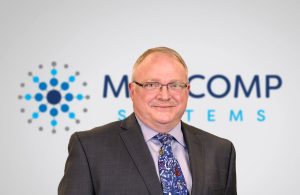This article was originally posted on Becker’s Hospital Review.
Jay Anders, MS, MD is Chief Medical Officer of Medicomp Systems of Chantilly, VA.

Even though we’re only one month into 2018, a quick peek at the headlines reveals some of the key trends that will certainly make their mark on healthcare and health IT this year. The topics aren’t new, but the buzz could be escalating as stakeholders address physician burnout, interoperability, and industry consolidation.
Here’s my take on these timely topics.
Physician burnout
Healthcare continues to heap new administrative tasks on physicians. Providers are overburdened by ever-changing regulatory and reimbursement requirements that distract from patient care and force adjustments in clinical workflows. Physicians are not well-equipped with productivity-enhancing tools and often end up spending more time figuring out how to fulfill various reporting requirements than they do delivering care. As we simultaneously ask physicians to address more paperwork, reduce costs and improve outcomes, is it any wonder that clinician burnout rates continue to rise?
At the start of the year, the American College of Physicians launched an initiative aimed at creating a culture of wellness, improving practice efficiencies, enhancing individual physician well-being, and reducing administrative burdens. Meanwhile, the American Academy of Family Physicians, which reports that two-thirds of family practitioners claim to have at least one element of burnout, announced plans to make physician wellness a focal point of its 2018 agenda by addressing such factors as inadequate payment, administrative burdens, lack of interoperability, and the complexities of using EHRs.
While such initiatives are admirable, I’m not optimistic that physicians will see significant relief any time soon. I doubt 2018 will bring major legislative changes to streamline existing healthcare regulations. Instead, I fear physician disillusionment will continue to grow.
Interoperability
On January 5, HHS released its draft Trusted Exchange Framework that supports the goal of nationwide interoperability, as required by the 21st Century Cures Act. The framework, which was issued by the Office of the National Coordinator (ONC), includes a common agreement of exchange procedures to enable interoperability across health information networks.
Considerable work still must be done but it’s promising to see progress that advances the accessibility of records for patients, the exchange of population-level data, and the availability of open and accessible APIs. Health systems are finally accepting that interoperability is inevitable and that they can no longer refuse to share information with competing providers. Furthermore, FHIR is gaining traction as a healthcare standard and helping to advance interoperability efforts.
Industry consolidation
We had barely flipped our calendars to January when Allscripts announced its intention to acquire Practice Fusion for $100 million. Practice Fusion, which reportedly supports 30,000 ambulatory practices, offers a free EHR that is primarily used by clinicians in small and individual practices. Allscripts says the acquisition “will complement and round out” its exiting ambulatory clinical portfolio. Meanwhile, Practice Fusion, which bankers once thought would go public with a $1.5 billion valuation, is being sold for far less than the $157 million it had raised from venture capital firms over the last 12 years.
Look for more industry consolidation this year among vendors serving the ambulatory care market. As hospitals continue to purchase physician practices and migrate them to their enterprise solutions, EHR and billing companies will lose more clients. Smaller ambulatory vendors will be forced to consider exit strategies and many will forgo making major investments in new products. Larger enterprise vendors will follow Allscripts’ lead and seek opportunities to grab more market share. The exception to this trend will be the boutique EHR vendors that cater to orthopedics, ophthalmology, and other specialties with unique documentation requirements.
The year is just getting starting so my guess is that these trends are just the tip of the iceberg for healthcare IT in 2018. Stay tuned!
Jay Anders, MD is the Chief Medical Officer of Medicomp Systems. Dr. Anders supports product development, serving as a representative and voice for the physician and healthcare community. Dr. Anders spearheads Medicomp’s clinical advisory board, working closely with doctors and nurses to ensure that all Medicomp products are developed based on user needs and preferences to enhance usability.